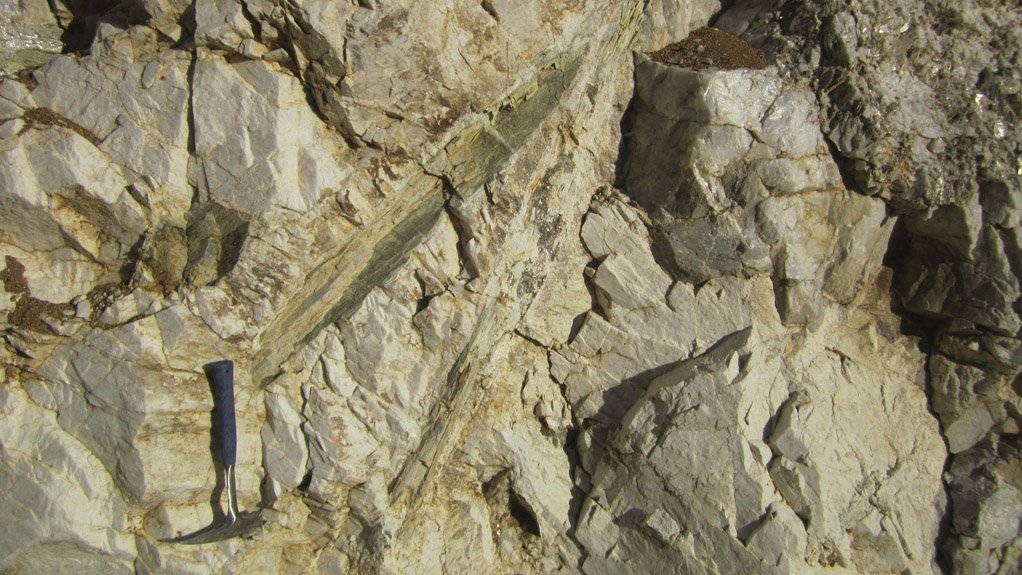Zimbabwe, a country which is facing a food security disaster, high levels of unemployment, skilled and semiskilled emigration and a cash-starved economy, having issued its own bond notes in November to solve its liquidity crisis, is leading Africa in lithium production.
Bikita, a district in Masvingo province, is Africa’s only lithium producer, making Zimbabwe the fifth-largest lithium producer in the world at a time when future demand estimates are driving much lithium exploration activity, states mining and environmental consulting service The MSA Group geology operations manager Michael Cronwright.
Zimbabwe produced 900 t of lithium in 2015, with top producer Australia accounting for 13 400 t, Chile for 12 900 t, Argentina for 3 800 t and China for 2 200 t. Minerals exploration and mining company Premier African Minerals is looking for partners to expand its lithium and tantalum mining operations at its Zulu project, in Zimbabwe.
Additionally, Australasia-based publicly listed mining company Prospect Resources has also secured diamond-drilling services for its recently acquired Arcadia lithium project, also in Zimbabwe, and has declared a maiden resource estimate of 36-million tons at 1.17% lithium oxide.
MSA is currently engaged in a competent person’s oversight role advising clients on geological and technical aspects, operating procedures, best practice and reporting for several lithium exploration projects in Zimbabwe and South Africa, and has also been commissioned by a number of clients to evaluate exploration projects and old tin and coltan mines further afield in Africa.
“Exploring and reporting the results of lithium deposits requires a good understanding of pegmatite geology, mineralogy and mineral textures, chemistry and the deposits’ petrogenesis to properly evaluate them,” says Cronwright, adding that it is just as important as providing clients with the correct technical support to ensure that the right petrological studies and mineralogical and metallurgical testwork is done.
In Africa, lithium is sourced from the rare element class of pegmatites belonging to the lithium/caesium/tantalum (LCT) family. The pegmatities contain the lithium-bearing minerals of spodumene, petalite, lepidolite, amblygonite and eucryptite. Typically, the pegmatites also host other minerals that are economically significant such as tantalite (or coltan), pollucite (or caesium), tin, mica, beryl and feldspar.
MSA explains that, as with many elements, lithium is not rare but economically extractable concentrations are rare. In Africa, LCT pegmatites are found in mobile belts in Mali, the Kibaran belt in the eastern Democratic Republic of Congo, Rwanda, Zimbabwe, Namibia, South Africa, Tanzania, Mozambique and Egypt.
Demand for lithium is largely owing to demand from the battery storage market, owing to the use of mobile devices, electric vehicles (EVs), electrification projects around public transport in China and the rest of the world, and the increased demand for residential and power grid storage systems, notes MSA.
The company notes that the battery market accounts for about 36% of lithium demand and is expected to grow to 73% by 2025.
Cronwright states that companies, such as US energy storage company Tesla, have done well to market their EV technology, but now they need to “back up their hype and deliver on the products promised”.
Overall, lithium demand from all applications (worldwide) is expected to grow from 171 000 t/y lithium carbonate equivalent (LCE) in 2015 to about 350 000 t/y LCE by 2020.
MSA explains that lithium brine producers cannot react fast enough to meet the increase in demand and, as a result, many are expanding their operations, with the effects of these expansions expected to be realised in the next two to three years.
Cronwright highlights that any company wanting to capitalise on the current high lithium prices needs to be producing or be close to producing lithium in the next 18 to 24 months. Lithium prices are currently around $18 000/t lithium carbonate (China spot for 99.5% battery grade) and are peaking at about $25 000/t. Long-term forecasts see the price returning to between $7 000/t and $8 000/t.
Edited by: Tracy Hancock
Creamer Media Contributing Editor
EMAIL THIS ARTICLE SAVE THIS ARTICLE
ARTICLE ENQUIRY
To subscribe email subscriptions@creamermedia.co.za or click here
To advertise email advertising@creamermedia.co.za or click here













